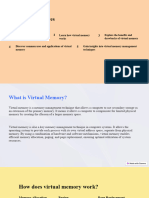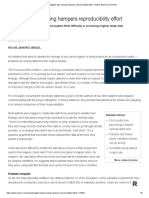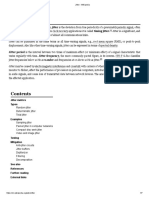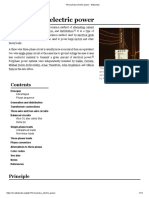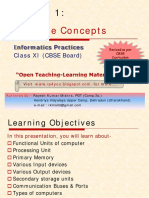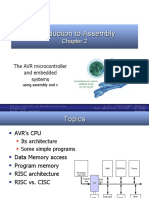0% found this document useful (0 votes)
135 views16 pagesVirtual Memory in Operating System - GeeksforGeeks
Virtual memory is a memory management technique that allows applications to run as if they have access to a large, continuous block of memory, even when physical RAM is limited. It supports multiprogramming by enabling processes to operate with only portions of their address space in RAM, utilizing techniques like paging and segmentation. The document also discusses the history, functionality, types, and performance implications of virtual memory, along with strategies for managing it effectively.
Uploaded by
sorinproiecteCopyright
© © All Rights Reserved
We take content rights seriously. If you suspect this is your content, claim it here.
Available Formats
Download as PDF, TXT or read online on Scribd
0% found this document useful (0 votes)
135 views16 pagesVirtual Memory in Operating System - GeeksforGeeks
Virtual memory is a memory management technique that allows applications to run as if they have access to a large, continuous block of memory, even when physical RAM is limited. It supports multiprogramming by enabling processes to operate with only portions of their address space in RAM, utilizing techniques like paging and segmentation. The document also discusses the history, functionality, types, and performance implications of virtual memory, along with strategies for managing it effectively.
Uploaded by
sorinproiecteCopyright
© © All Rights Reserved
We take content rights seriously. If you suspect this is your content, claim it here.
Available Formats
Download as PDF, TXT or read online on Scribd
/ 16
















